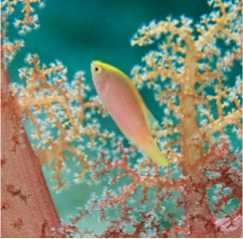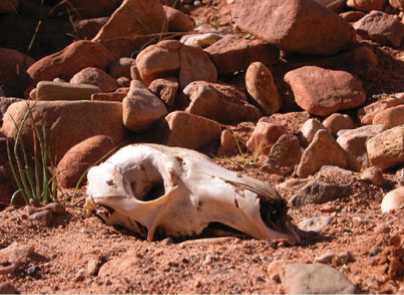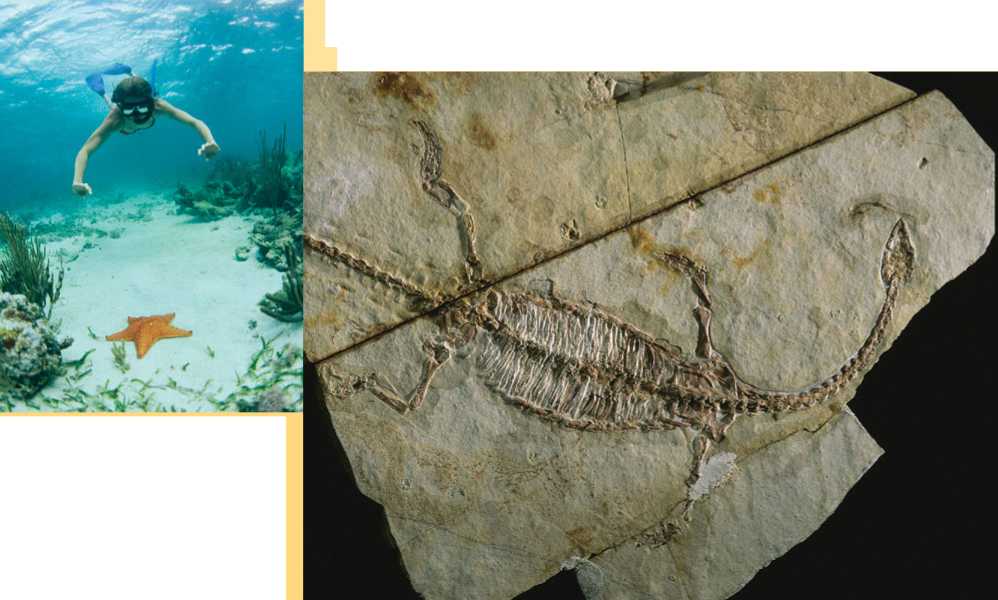Types of Fossils and How They Form


1. Representatives of all six kingdoms are known from fossils. Eubacteria have left a good record primarily in stromatolites and thrombolites. The fossil records of archaebacteria and fungi are poorly known. Animals, plants, and protoctists have left good to excellent fossil records.

1. Ecology is the study of factors that influence the distribution and abundance of species in nature. Paleoecology is the study of ecologic conditions that affect ancient organisms.
2. Habitats are settings inhabited by life forms. Habitats are broadly divided into terrestrial and aquatic settings. Aquatic habitats are marine (saltwater), freshwater, or brackish (slightly salty). Terrestrial and freshwater habitats are grouped together as nonmarine environments.
3. An ecologic niche is the way a species relates to its environment. A niche includes requirements for food, physical and chemical conditions, and interactions with other species.
4. Autotrophs, or primary producers, use raw materials in the environment to make their own food. Chemoautotrophs, including many archaebacteria, derive their energy from the breakdown of compounds in rocks. Consumers derive nutrients by feeding on or by decaying tissues of other organisms. Herbivores are consumers that feed on plant, algal, and fungal material. Carnivores eat other animals, and include predators and scavengers. Omnivores combine herbivory and carnivory. Parasites live on or within other living organisms. Detritivores obtain nutrients from decaying tissues. Deposit feeders ingest mud and extract organic materials from it. Suspension feeders live in water and pass currents through a natural filter.
5. Benthic organisms live on the floor of an aqueous environment.
Pelagic organisms live in the water column and include swimming (nektonic) organisms, floating (planktonic) organisms, and pseudoplanktonic organisms (which live attached to other floating or swimming organisms).
1. A fossil is any evidence of ancient life.
2. Evidence of ancient life is of three basic forms: (1) body fossils, or remains of ancient organisms; (2) trace fossils, or evidence of the activity of ancient organisms; and (3) biomarkers, or organic chemical signals left in sedimentary layers by organisms.
3. Taphonomy is the set of processes that lead to fossilization. Taphonomic processes begin either when an organism dies or releases bodily parts to the environment. Remains of most organisms normally do not stay intact for long because considerable breakdown by scavengers and microbes occurs.
4. Some body fossils are preserved in chemically unaltered state. However, most are preserved in altered states by recrystallization, as molds, by mineral replacement, by permineralization, or by carbonization.




 World History
World History









